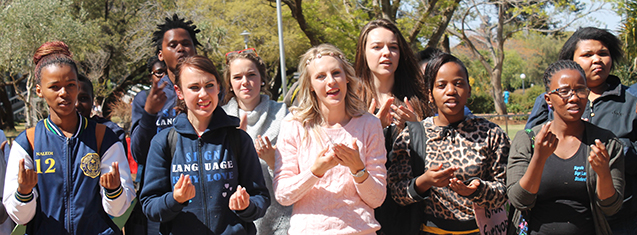
There are more sign languages in the world than spoken languages. About 600 000 deaf South Africans have the South African Sign Language (SASL) as their first language. There are about 40 schools for the deaf in South Africa. 90% of all deaf children are born to hearing parents. Only about 30% of speech is visible on the lips.
How many of these fundamental facts did you know?
Deaf Awareness Month serves to educate hearing communities about issues that the deaf population face on a daily basis, as well as to honour the history and culture of people who are deaf or hard-of-hearing. For the past 70 years, the University of the Free State (UFS) has dedicated September to hosting events around the topic of hearing impairment.
The theme of ‘With South African Sign Language rights, our children can!’
This year’s theme had learners from Bartimea School for the Deaf and Blind, hearing impaired UFS students, and Prof Jonathan Jansen engaged in a conversation around empowerment at a picnic held on Monday 7 September 2015 at the Red Square on the Bloemfontein Campus.
Through a sign language interpreter, Matshela, a grade 12 learner, explained that he felt empowered by the efforts the university has made to embrace and empower individuals with disabilities. He then revealed his intentions of pursuing Information Technology or Social Work studies at Kovsies.
Clifford Machete, a first-year Administration student at the university, stated how sign language interpreters gave him an ‘I can’ attitude when he first arrived at university. “As a deaf person, I see that I am able to learn with the help of sign language interpreters. There is accessibility at the university, and I am so proud to be a student here and part of Deaf Awareness Month.”
Susan Lombaard, Lecturer and Acting Chairperson at the Department of South African Sign Language, believes that Deaf Awareness Month is about promoting human dignity.
“We want to show the world that deaf people can do everything, and that their language is as strong and important as any spoken language.”
For more information regarding Deaf Awareness Month activities, contact the South African Sign Language Department on 051 401 2251.